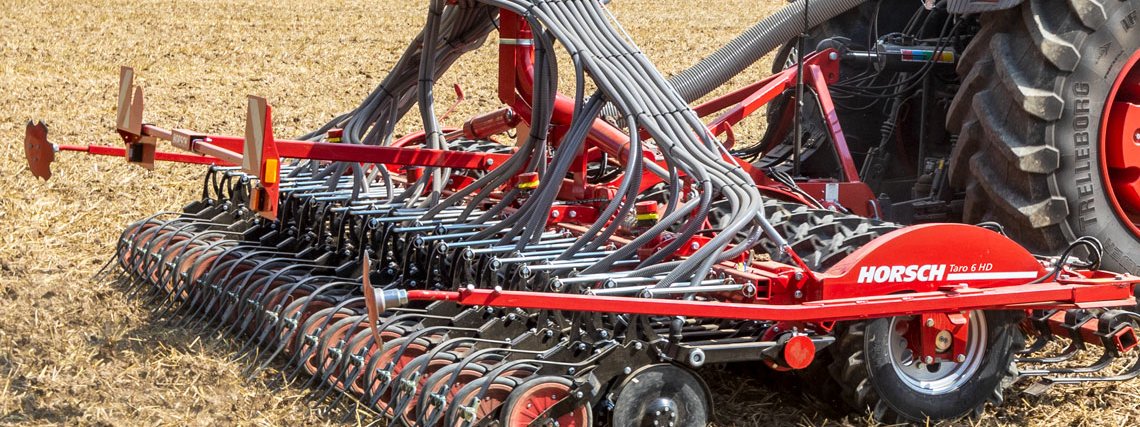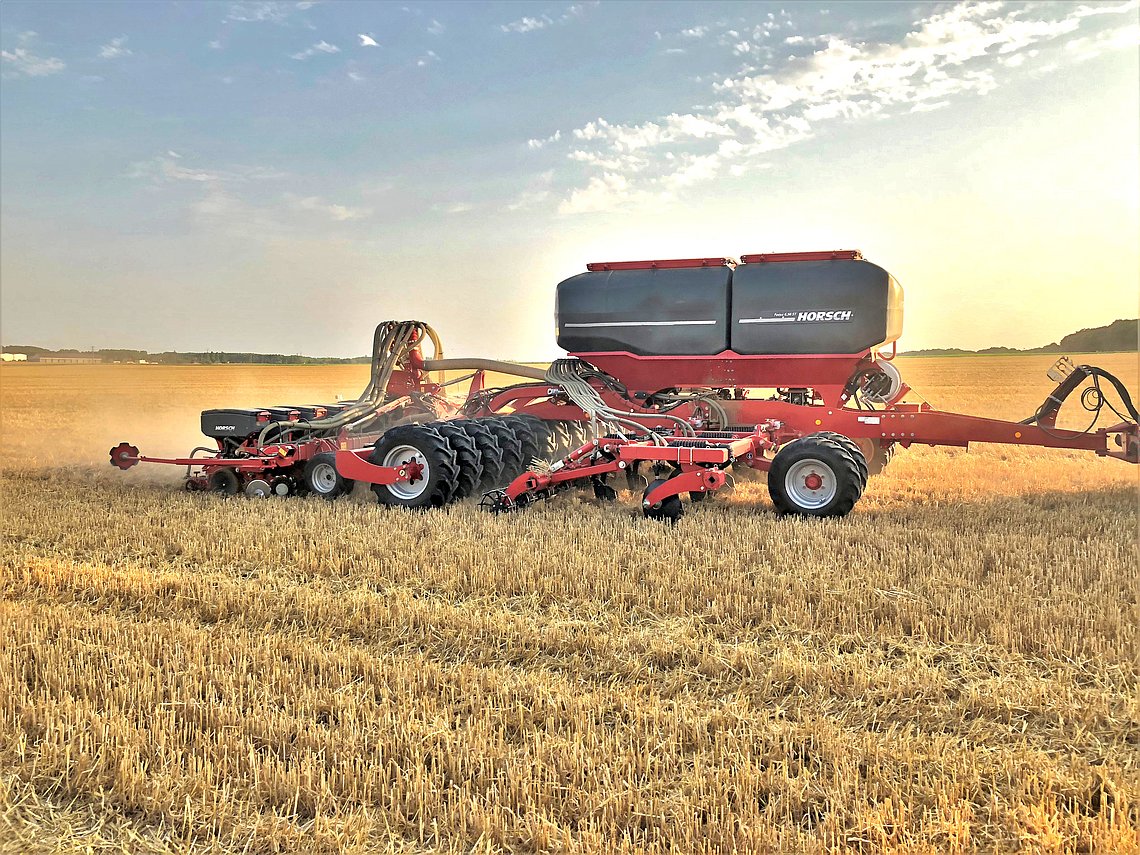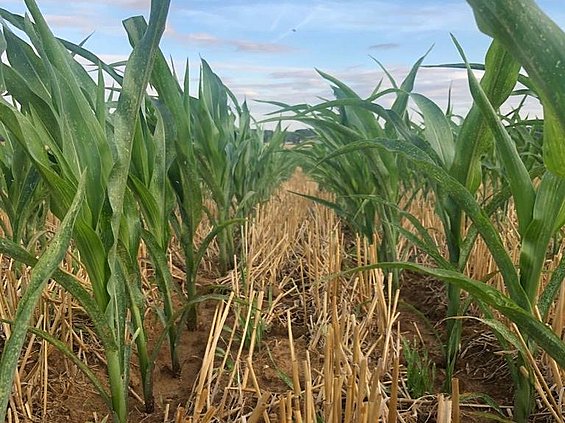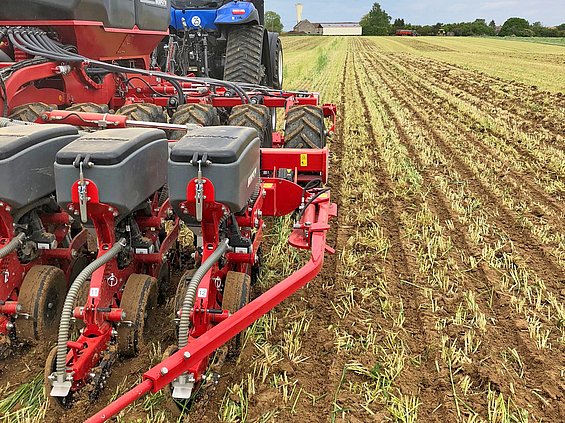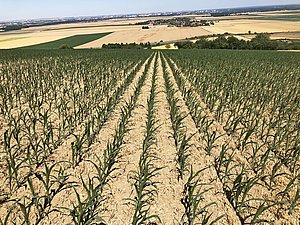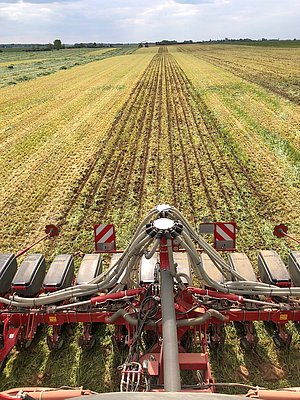StripTill & HORSCH Focus (part 4)
In some regions of Europe, the StripTill method for row crops like maize becomes more and more important. The photos were taken in the department Seine-et-Marne (about 100 km east of Paris, the region is marked by biogas plants) last year. In Seine-et-Marne maize is grown after a whole-plant silage. In years with low rainfall many crops lack water during the first period of growth. During the targeted loosening of the future seed rows less than one third of the soil is moved. This improves the water balance of the fields. Thus, in dry periods the plants have more water at their disposal than with conventional sowing. The fertiliser depots that are applied in a targeted way are placed in the root zone of the maize plants. The exact placement of the fertiliser in one or in two different depths puts enough nutrients at the disposal of the plants and prevents unnecessary nitrogen losses.
The deep loosening of the root zone improves the root growth of the maize. The improved water absorptive capacity also adds to the root growth. This encourages the lateral development of the roots in the space between the rows. With a HORSCH Focus and a HORSCH Maestro the soil is loosened and fertilised in a targeted way and maize is planted precisely – all in one pass. Thus, you can save passes and lower machine costs. Efficiency and mainly process reliability are important advantages of the Focus and the StripTill system. If you carry out deep soil loosening and sowing separately, there always is the problem to find the right track. Moreover, there time and again may be small issues with GPS or the tractor that might offset the exactly aligned placement of fertiliser and seed. In this respect the advantages of carrying out everything in only one pass with the HORSCH Focus are obvious.
A Focus 6 TD with a 3-point adapter is available for row crops with a tine spacing of 50 cm or 75 cm (please consider the transport width of 3.47 m resp. 3.30 m for the homologation for road service). These tine spacings are perfectly in line with the row spacings of an 8- or 12-row Maestro RV. The AirVac metering system of the Maestro RV line that was launched at the Agritechnica 2019 allows for an exact and fast metering of maize, beets, sunflowers, beans and rape. But this is not the end of the variety of the range of use.
